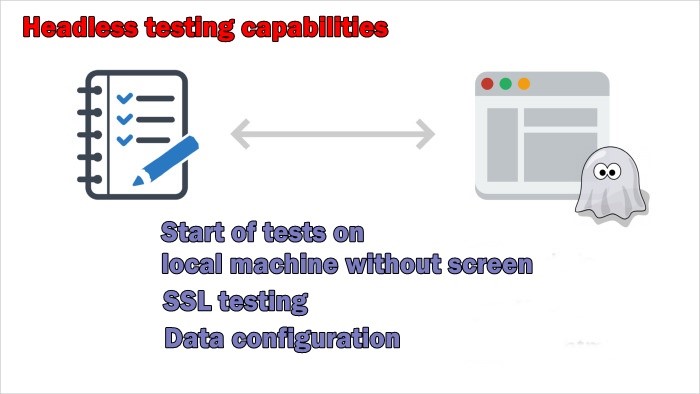The process of headless testing is a start of a prepared test in order to check the performance of some UI parts without its displaying. This testing is based on scripts launching in a browser but without its direct interaction with UI.
Why Do We Need to Use a Headless Browser?
The pursuit of profit is just a simple cliché. But if many specialists of testing automation pay special attention to the headless testing, thus there’s some point in it.
For example, Souse labs announced the release of a new service Sause headless, a specialized solution for the headless testing of any web components. Obviously, nobody wants to release such a product without a good reason for this.
This software allows getting useful feedback from the clients. These comments help to see what functionality is the most popular and what technical parameters have to be worked on.
Headless testing is developing only in Sause Labs for now. Clearly, they won’t be the only in this field for long. As far as the lifecycle of software creation is moving from the development to the testing stage, there will be a high need for feedback between these phases.
One of the effective ways to accelerate this process is by performing headless testing in the browser.
The Role of Testing Automation in Software Development
Testing automation is the process that includes not the testing only but something else. It is some kind of testing of everything that can be automated, some revival of time and efforts of a team in the lifecycle of software development. There are headless browsers that are one of the most powerful and qualitative tools for quick automation.
Headless Browsers Are Better Than Ordinary Ones
Quick loading is a peculiarity of all the headless browsers in comparison with classic ones. The fact is that when you work with the headless browser, you do not need to wait till CSS, HTML, JS is loaded. Such browsers cannot load the traditional GUI.
Technically, there’s no big difference between headless and common browsers. But if we compare the speed of interaction with tested content, you will see the difference in 15 times. It means, if tester must find an efficient web component, he/she has to pay attention to the headless browsers.
Headless Browsers and Scraping
Also, headless browsers can collect information on the sites. For this, you don’t even need to open the browser. It’s enough to use the headless technology for HTML structure scraping. Moreover, you do not have to deal with browser rendering.
Let’s take a look at one example. We have a test case that must compare prices on different web sites.
Considering the fact that for test performance we need data only, there’s no need to open the browser and load the local machine. We use a particular tool that can collect the data we need.
Headless Browsers Are Time-Saving for Developers
Many web developers all over the world prefer these browsers because of the easy capability to perform module testing. It is very convenient when you can use only a command line without a need for a manual restart or launch of a browser. It really saves programmers’ time and effort.
Usage of Headless Browsers
There are many ways how to use headless browsers:
- Start of tests on the local machine without a screen;
- Data configuration;
- SSL testing;
- Simulation of browsers activity on different machines;
- Start of tests in the headless system, for example, Linux, without GUI;
- Tests benchmarking, since all the headless browsers can render CSS and HTML as classic browsers (one can easily test the styles productivity).

Headless testing capabilities
List of Popular Headless Browsers
- Google Puppeteer – Node library. It is a high-level API for configuration of headless Chrome and Chromium that are based on DevTools protocol.
- Chrome (version 59+).
- Firefox (versions 55-56).
- PhantomJS has quick native support for any web standards: works with CSS selectors, Canvas/SVG, DOM tree processing.
- HtmUnit is a popular browser without GUI based on Java code. It can engineer HTML documents and give the user the API that opens pages, fills forms, and clicks on links.
- Splinter is a modern headless browser that is oriented to a Python programming language. It has an open-source code and is used for web application testing with Python.
- jBrowserDriver is an easily installed driver of a web browser, fully compliant with Selenium WebDriver spec.
Usage of Headless Browsers During Software Testing
In most cases, website testing services are focused on potential user actions. That’s why there’s no need to use headless browsers only.
But, on the other hand, usage of headless browsers allows shortening the time on testing and analyzing developed software with better technical performance.
No doubt, someone likes this kind of testing, someone does not. There is only a question about the usefulness of one or another testing tool while solving particular tasks.










Leave A Comment